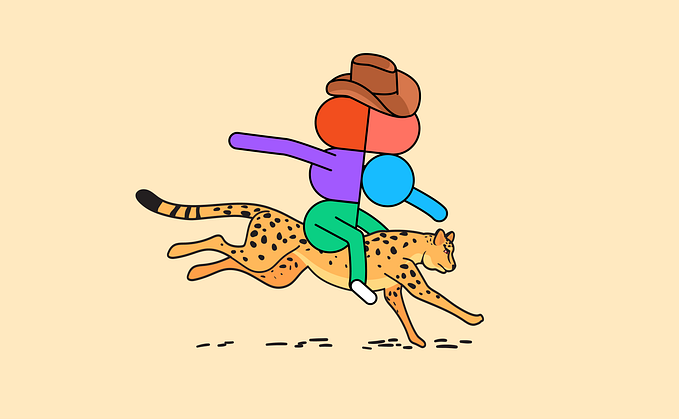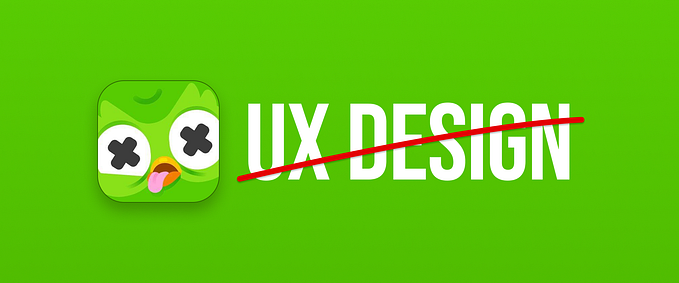Design principles from the Metaverse
What I learned about design working at a virtual reality arcade
I’ve been working at iSimu VR, Georgia’s premier virtual reality arcade, for three years now.
During the past 10 months, I have also been taking a UX Design course to transition into a Product Design role. To commemorate my graduation from that course, as well as my time at the arcade, I wanted to write about how these two experiences came together to help produce my burgeoning brand of ‘TechnoWizard UX’.
Over the past year since I was exposed to UX, I began seeing my job through the lens of a designer. My arcade operations became ‘service design’. My customer feedback questionnaires became ‘user research’. Helping improve our website through copywriting and layout became ‘web design’. I even carried out some contextual inquiries and usability testing to lead the new iterations of our virtual game launcher environment.

What brought it all together was an AMA my Flatiron class had with Jordan Higgins the ‘Head of Immersive Experience’ at U.Group (my dream job). Since most of us were transitioning careers, he suggested we use our past experiences to stand out as designers with some subject matter expertise.
If you were a nurse, think about designing in the medical field; if you were an accountant, think about being a designer for fintech companies.
So of course, as a VR arcade operations manager and long-time fan of emergent technology, I’d love to design for immersive experiences!
Thus here we are…
Some of these principles won’t be new, but hopefully, the VR lens will provide a new perspective to enrich your own design process, regardless of whether or not you are designing for this field.
Without further ado, here are a few key takeaways I want to incorporate into my design career from working at a virtual reality arcade:
Context and environment —
The context of the environment needs to provide clues as to what can and can’t be done. This brings common design concepts like affordance and constraints into even greater importance.
When you have entire virtual landscapes to explore, people take cues from the environment to decide how to move forward. These cues need to be obvious, consistent, and engaging. Otherwise, they will go unnoticed and people will get lost more often than not.
However, you don’t want to just tell them exactly where to go and what to do. An environment still needs to be engaging, which usually means it needs some challenge or interaction. If the environment is too simple, then people will get bored and quit.
Design Takeaway: Design an experience that guides the consumer through an environment balanced between options and challenge. Give a few meaningful choices that lead to desired solutions.
Focus on the content —
Digital realities allow you to focus on accomplishing just one task at a time. People may expect otherwise, but VR is really all about focused content. If there is too much going on in the environment, people will tune it out or quit.
Each scene should focus on just one task, everything else should complement or augment that task. This can stack. The entire experience should have one major goal, then each stage or level should have key goals meant to accomplish the larger goal, and so on down to the individual gameplay elements. This allows you to create an experience that feels incredibly smooth, purposeful, and streamlined.
Design Takeaway: Design with purpose. This can be accomplished by determining the key content first, then creating everything in support of that content in increasingly granular levels.

Multipurpose interactivity —
Adding interaction is an opportunity for engagement and immersion. But interaction for the sake of interaction is hollow: it is an obvious gimmick.
Interactive objects should be multipurpose. They should leave space for emergent use cases (just like any real-life object) to be considered a real interaction. It can be as simple as applying physics to all objects so that they can throw them, stack them, pass them to your friend, etc.
An object with more than one use feels like a real object; it feels meaningful even if it doesn’t have intrinsic meaning.
Design Takeaway: Every interaction should have multiple uses. An interaction that is only there to look ‘cool’ is useless and feels shallow. An interaction that serves another purpose, even if that purpose was not intended, is a richer experience.
Meaningful discoveries —
Encouraging (and rewarding) exploration makes for a more enjoyable and memorable experience, but it has to be meaningful.
Don’t just give useless trophies.
When people feel like they’ve unlocked or uncovered something that actually changes their experience moving forward, they feel more connected. They remember and share that experience with others; we want more of that.
Discovery plays on our species’ shared penchant for curiosity. If you ‘reward’ that curiosity with useless crap (like a boring trophy, or just a dead-end), it becomes a punishment. Then people will be dis-incentivized to explore in the future. People will no longer engage with your experience.
Design Takeaway: Create experiences that encourage and sufficiently reward exploration of your product. This will form a natural ‘game loop’ driving people to spend more time figuring out what is possible.

Understanding expectations —
Fun is subjective. Some people want to experience something extreme and ‘out of this world’, some people just want to shoot things, others want a mental challenge.
You have to cater the experience towards what they are expecting.
This starts even before people engage with your experience. You first have to understand who you are building this for, then go deep into their psychology. Understand people’s needs and desires to unlock their ‘core drives’ and build your experience around that.
Market the experience to those people and don’t worry about trying to appeal to everybody, there lies madness and mediocrity. Appeal to those who love it, and they will be excited to tell more people like them about it.
Design Takeaway: Be firm and intentional when you design a product. But more importantly, recognize that how you market and frame that product will effect how it is experienced.
Take stock of coachability—
Related to the above, everyone has a different level of patience for instructions. This is not about intelligence, just how readily they seek out and follow directions.
Some people will not do anything before reading instructions, but most people either skim through or completely skip the directions, yet still expect to understand how it works. It is therefore imperative to quickly identify each type of customer coming into our arcade and act accordingly.
For some experiences, you can let them figure it out because the experience is still enjoyable even if you don’t know what you’re doing; for others, it is easy enough to just tell them a few tips and tricks; but for those that insist on doing something complicated, you have to find a way to teach them without hampering their experience.
Usually, letting people fail sobers them up enough to want to do the tutorial, but sometimes they conclude that the experience is too hard, and they quit before giving it a chance.
Design Takeaway: Be aware of how open to instructions your target audience is. If they are the type to follow directions, then an onboarding experience is expected, but if not (most aren’t), then your product needs to have an 'in-game' tutorial.

Immersion is invisible —
When people are immersed, they are so involved in an experience that they no longer are thinking about the technical limitations of the medium.
The suspension of disbelief one accepts when reading a good book or watching a good movie is 10x when you are immersed in a virtual experience. Everything else falls away, and you sometimes forget where you are, even if you know perfectly well that there is a big headset over your eyes and clunky controllers in your hands.
This is a difficult experience to replicate in other mediums to this level, but the key concept is that immersion only happens when the environment, controls, interactions, etc all come together to create a consistent world.
Immersion becomes possible when the medium takes a back seat to the content.
Which is so natural and fluid and realistic (ie self-consistent) that they become real.
Design Takeaway: Be consistent. Apply focused content, multipurpose interactivity, and a subtly guided environment to immerse people into your experience. An immersive product is one with it’s own self-consistent world.
Multiplayer multiplies most experiences —
Humans are incredibly social creatures. We are attracted to social presence, so any experience that helps one communicate with others usually amplifies that experience. Sharing discoveries, interactions, and memories with someone else creates and strengthens bonds.
The more presence you can establish without compromising the fidelity of the experience (interactivity, immersion, discoveries, etc) the more engaging and memorable that experience will likely be.
Design Takeaway: Consider how social can play a role in your product. Comments and social media are not the only methods, simple presence may be far more impactful, especially between customers with relationships.

There are many other things one can learn from building, exploring, and/or guiding others through virtual experiences, but these are some of my favorite lessons. Please let me know if you’d like me to share more!
These are the type of takeaways I want to bring into my UX design career. Immersive experiences are an exciting, new medium that will completely revolutionize how we interact with the world even more radically than smartphones did.
These takeaways will be just the first of many lessons learned from working with XR and other spatial computing products. I hope they will help us design better experiences that feel magical.
If you’re curious to learn more about me, feel free to check out my TechnoWizard UX portfolio. I’d also love to connect with you on LinkedIn!








